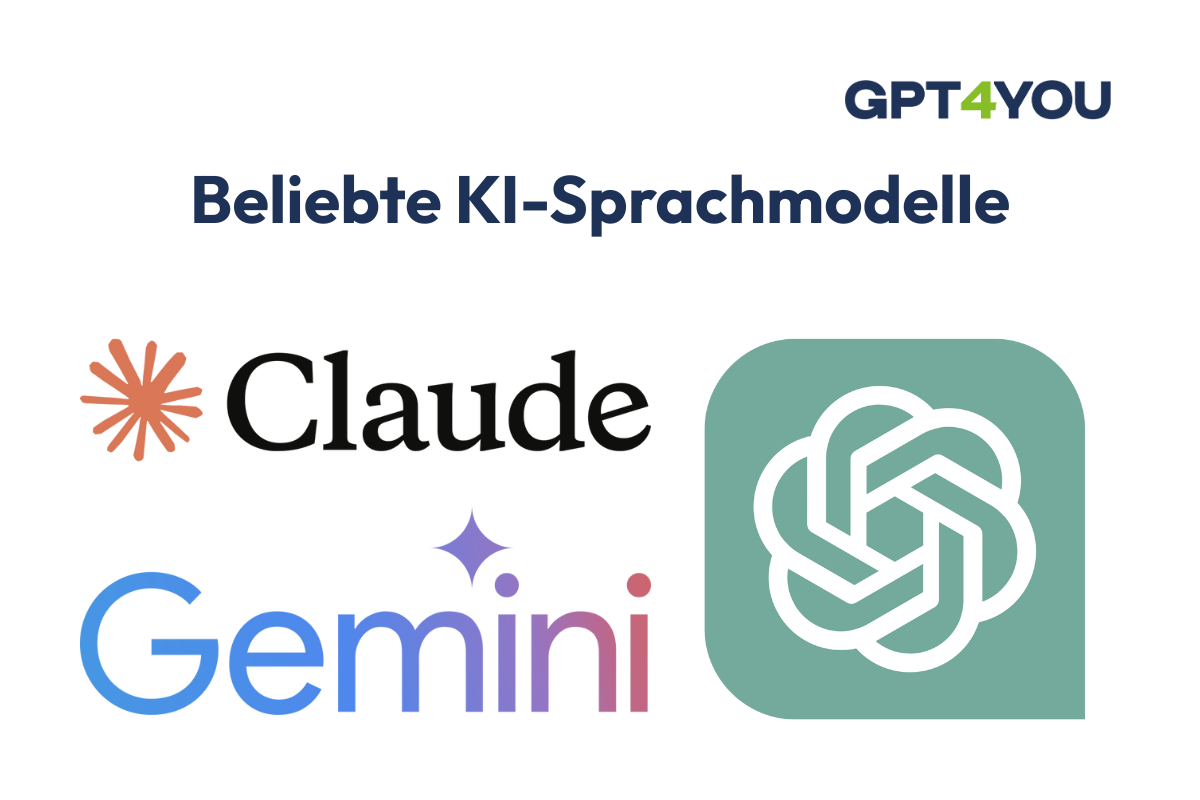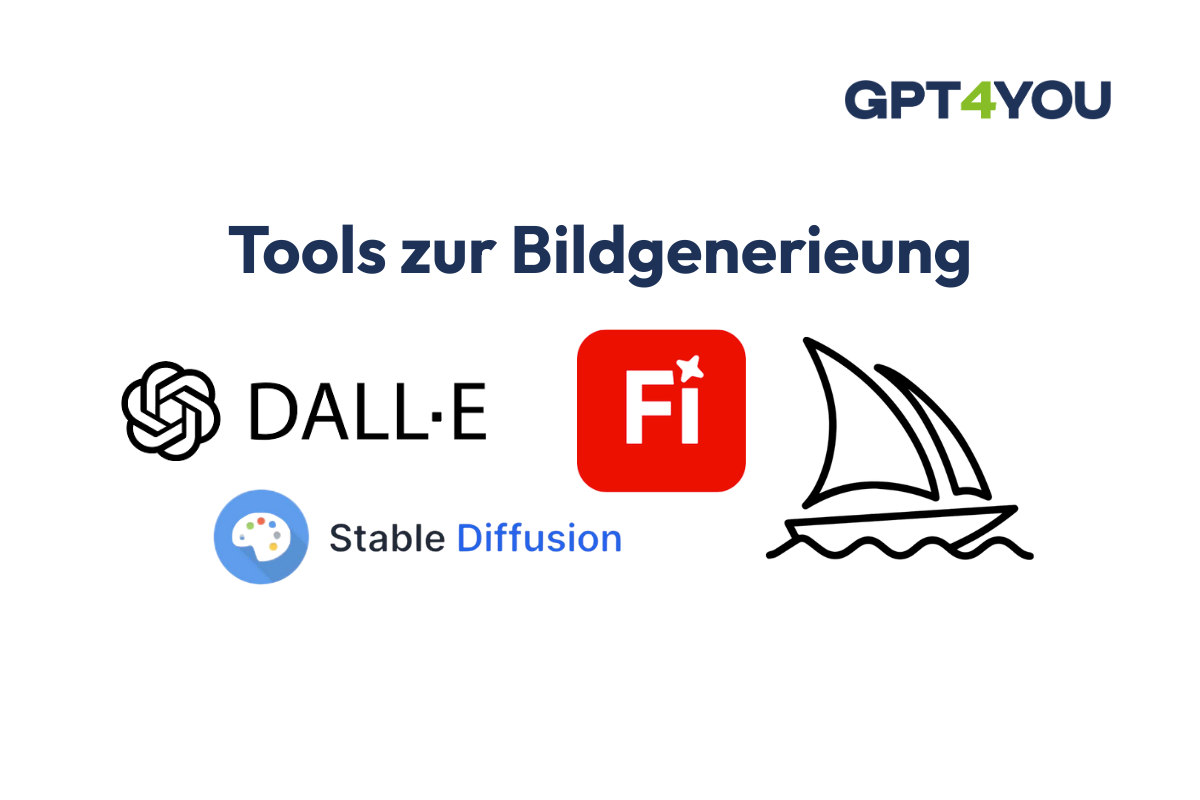
What is artificial intelligence? - Definition, history, future and examples
Everyone is talking about it, but do you know what's behind it? What exactly is artificial intelligence? We want to answer this question today. First of all, the topic is extensive, so you'd better grab a coffee!
AI is often seen as the key technology of the future. It is said to have the potential to initiate fundamental changes in the economy, health and safety. But what is artificial intelligence really? Is it the stuff of science fiction dreams or is it already a tangible reality?
The answer is: both. From the algorithms that organize our email inboxes to the complex systems that support medical diagnoses, artificial intelligence is already ubiquitous.
This article will serve as a comprehensive guide. We'll explore the concept of artificial intelligence from the ground up, tracing its history, demystifying the core technologies such as machine learning and deep learning, and examining the far-reaching applications that are changing our world. We will also look at the philosophical and ethical issues surrounding the rise of non-human intelligence.
Our aim is to paint a clear and nuanced picture of this revolutionary technology and highlight the enormous significance of AI for our society.
What is artificial intelligence? A definition
The definition of artificial intelligence is not set in stone and has changed over time.
At its core, artificial intelligence, often referred to as AI, is a broad subfield of computer science. The basic attempt of AI is to develop machines that are capable of performing tasks that typically require human intelligence. These intelligence capabilities include a variety of skills, such as learning from experience, understanding natural language, recognizing patterns, solving problems and making decisions.
It is therefore about teaching a computer not just to follow instructions, but to "think" and reason. However, the intelligence displayed by AI systems is not identical to human intelligence. It is a simulated form of intelligence based on algorithms and huge amounts of data.
AI research focuses on making these simulations ever more sophisticated and powerful. AI is based on systems learning from data and continuously improving their performance when carrying out certain tasks.
A key problem remains the replication of common understanding and common sense that humans apply so effortlessly. Artificial intelligence (AI) is therefore the field that is constantly pushing the boundaries of what machines can achieve. We at FIDA are also constantly working on new ways to push these boundaries further with our AI products such as fraudify or GPT4YOU!
The roots of AI: a historical perspective
The idea of creating artificial beings or machines with intelligence is centuries old and can be found in myths and legends. However, scientific research into artificial intelligence only began in the middle of the 20th century.
A decisive milestone was the work of the British mathematician Alan Turing in the 1930s and 1940s. He laid the theoretical foundations for the modern computer and posed the provocative question: "Can machines think?" in his famous "Turing Test" .
The term "artificial intelligence" itself was coined at the Dartmouth Conference in the USA in 1956. This event is considered the birth of AI as an independent field of research. In the decades that followed, AI research experienced several waves of optimism and disappointment, known as the "AI winter", in which funding and interest waned because the exaggerated promises could not be fulfilled.
But the fundamental work continued. Early AI systems were often rule-based, so-called expert systems that mapped the knowledge of experts in a narrow domain to make decisions. However, the real revolution came with a new form of learning: machine learning.
Do you also want to keep learning? Sure, otherwise you wouldn't be here! Take a look at the FIDAcademy and discover exciting training courses on AI

Bild einer Staue von Alan Turing Quelle: lenscap50 - stock.adobe.com
The heart of AI: machine learning and neural networks
Most modern AI applications are not based on hard-coded rules, but on the ability to learn from data. This is the domain of machine learning. Instead of telling a computer every step to solve a task, developers give it a large amount of sample data and an algorithm that enables the system to recognize patterns and relationships in this data on its own.
Imagine you want to teach an AI system to recognize cats in pictures. Instead of trying to describe all the characteristics of a cat (fur, ears, whiskers) in code, you show the system thousands of images marked as "cat" or "no cat". By analyzing this data, the system learns the visual patterns that make up a cat. The more data the system processes, the better its intelligence becomes at this specific task.
Deep learning is a particularly powerful method of machine learning. Deep learning uses an architecture inspired by the human brain: artificial neural networks. These neural networks consist of layers of interconnected "neurons" (mathematical functions) that process information. "Deep" in deep learning means that these neural networks have many layers (deep networks), which enables them to recognize extremely complex patterns in huge amounts of data.
Deep learning is the driving force behind many of the recent breakthroughs in AI, from speech and image recognition to generative AI. The ability to learn from massive amounts of unstructured data is what makes these systems so powerful. The foundation of machine learning is therefore always the quality and quantity of the available data. Does deep learning sound like an exciting topic for you? In our FIDAcademy, we offer courses on exactly this topic!
Weak AI vs. strong AI: the two faces of intelligence
When we talk about artificial intelligence, it is important to distinguish between two basic types: weak AI and strong AI.
Weak AI, also known as narrow AI, is the only form of artificial intelligence that we have actually realized today. These AI systems are specialized to perform a specific task or a narrowly defined set of tasks.
An example of weak AI...
... is the voice assistant on your smartphone, a chess computer or the AI that controls an autonomous car. These systems can perform superhumanly in their specific domain, but they have no real understanding or awareness. The intelligence of a weak AI is a tool that has been optimized for a specific purpose. All of today's AI applications, from recommendation algorithms to medical diagnostic systems, are forms of weak AI.
We at FIDA are also proud of the development and application of such systems. GPT4YOU is already supporting numerous companies in the automation of processes
An example of strong AI...
... also known as general artificial intelligence (AGI), is still hypothetical and a popular topic in science fiction. A strong AI would be a machine with intelligence on a par with that of humans.
It could understand, learn and apply every intellectual task that a human being can perform. Such an AI would have its own consciousness, the ability to self-reflect and would react flexibly to completely new problems for which it has not been explicitly trained.
The development of a strong AI is the ultimate goal of many researchers, but it also raises profound ethical questions. At present, we are still a long way from realizing strong AI, and it is unclear whether it can ever be achieved.
The creative machine: the rise of generative AI
A particularly exciting and fast-growing area of artificial intelligence is generative AI. In contrast to analytical AI systems that classify data or make predictions, generative AI focuses on creating new, original content. These systems learn from existing data - such as text, images, music or code - and use this knowledge to generate completely new content that resembles the patterns of the training data.
One prominent example is large language models (LLMs), which are able to compose coherent and contextual texts, from poems to emails to complex articles. Another example is image generation, where AI systems can create detailed and often photorealistic images from a simple text description.
Language models (LLMs)
ChatGPT (OpenAI) - Best-known AI tool for texts, conversations, emails, code and much more.
chat.openai.comGemini (Google, formerly Bard) - Google's AI assistant, integrated into Search and Workspace.
gemini.google.comClaude (Anthropic) - AI chat model with a focus on security and helpful answers.
claude.ai
Did you know that as a company you are not allowed to use these AI tools because you would be violating data protection regulations? But we provide the solution! All these models can be connected to GPT4YOU, allowing you to benefit from AI securely and in compliance with data protection regulations!

Image generation
Midjourney - Popular for creative, artistic and photorealistic images, usable via Discord.
midjourney.comDALL-E (OpenAI) - Text-to-image AI, now directly integrated into ChatGPT.
openai.com/dall-eStable Diffusion (Stability AI) - Open source alternative, can be used locally or via platforms.
stability.ai

Video & Audio
Runway Gen-2 - AI for video generation from text or images.
runwayml.comElevenLabs - Realistic speech synthesis (text-to-speech).
elevenlabs.io

Generative AI uses advanced deep learning architectures, in particular so-called transformer models and generative adversarial networks (GANs). These methods enable the systems to understand the underlying structure of the data and generate new variations based on this. The capabilities of generative AI have the potential to revolutionize creative processes, but also raise questions about copyright, disinformation and the importance of human creativity.
AI in everyday life and in business: limitless applications
Artificial intelligence has long since left the ivory tower of research and has become an integral part of our lives and our economy.
The applications are so diverse that we encounter them all the time, often without realizing it.
Some examples of AI applications in everyday life:
Recommendation systems: AI systems analyze your previous behavior on platforms such as Netflix or Amazon to give you personalized recommendations for movies or products.
Voice assistants: Siri, Alexa and Google Assistant use AI to process natural language to understand your commands and provide relevant information.
Navigation: Navigation apps like Google Maps use AI to analyze traffic data in real time and calculate the fastest route to your destination.
Spam filter: Your email program uses machine learning to automatically detect and filter out unwanted messages.
Photography: Modern smartphones use AI to automatically optimize images by recognizing scenes and adjusting exposure, color and sharpness.
Artificial intelligence AI is also a driver of innovation and efficiency in business. In healthcare, AI systems help analyze medical images such as MRIs to detect tumors earlier and more accurately. In the financial and insurance sectors, AI applications such as our fraudify product are used to detect fraud. In industry, AI systems enable predictive maintenance, where machines predict failures before they occur. Self-driving cars are another ambitious example of the integration of complex AI systems into physical products.
This multitude of applications shows that AI has the potential to transform almost every sector and change the world of work in the long term.
The future of intelligence: opportunities, challenges and ethics
The development of artificial intelligence is progressing at a breathtaking pace. Systems are becoming ever more powerful, the volumes of data with which they are trained ever larger (big data) and the algorithms ever more sophisticated.
This technological development promises enormous opportunities: from accelerating scientific research and developing new medicines to solving complex global challenges such as climate change.
At the same time, the advance of AI raises serious ethical and social questions that we cannot afford to ignore.
How do we ensure that AI systems make decisions fairly and without bias?
What happens to jobs that are made redundant by intelligent automation?
How do we prevent the misuse of AI technology for surveillance or the spread of disinformation?
And who is responsible if an autonomous system, such as a car, makes a mistake?
These questions require a broad social debate and the development of a clear regulatory framework. It is about finding a balance between promoting innovation and protecting fundamental values.
The future of AI depends not only on technological breakthroughs, but also on our ability to shape this powerful technology wisely and responsibly. The goal must be to create AIs that serve the good of all.
Conclusion: The ongoing journey of AI
We have seen that artificial intelligence is far more than just a buzzword. It is a dynamic and multi-layered field of computer science that builds on a long history and is driven by the principles of machine learning and the processing of huge amounts of data.
From the weak AI that already permeates our everyday lives to the vision of strong AI that could redefine the boundaries of intelligence, we are in the midst of a technological revolution.
Today's AI systems are already powerful tools that help us accomplish complex tasks, find patterns in data and even create new content. Generative AI has shown us that machines can even develop a form of creativity.
But for all the fascination, we need to keep the challenges in mind. The development of responsible AI is one of the central tasks of our generation. The journey of artificial intelligence has only just begun, and it is up to all of us - developers, users, policy makers and society as a whole - to steer its course towards a positive future.
Want to learn more about AI? Then the FIDAcademy courses are just right for you. Or would you like to use AI in your company, but don't know how to get started? Then we will support you with our AI consulting and make sure that you don't lose your bearings in the AI jungle. Would you like to implement models such as ChatGPT or Deepseek in your company in a secure and data protection-compliant manner? Then GPT4YOU is the right solution for you! If in doubt: ask FIDA for AI questions!
FAQ - What is artificial intelligence?
Artificial intelligence refers to computer science processes that enable machines to perform tasks that typically require human intelligence. These include learning from data, pattern recognition, language comprehension, problem solving and decision-making.
Weak AI (or narrow AI) is limited to specific tasks and does not have its own consciousness or general understanding - such as voice assistants or image recognition systems. Strong AI (also known as AGI - Artificial General Intelligence) would be an intelligence that equals or surpasses humans in all cognitive areas. So far, this only exists in theory.
Generative AI is a subfield that aims to generate new content - for example text, images, music or code - based on patterns learned from training data. In contrast, classic AI models analyze data, recognize patterns or make predictions, but do not generate new, original content.
Some key events are:
The Dartmouth Conference in 1956, where the term "Artificial Intelligence" was officially coined.
The early years of rule-based expert systems.
The development of machine learning and later deep learning, where systems learn from data instead of being rigidly programmed.
Recurring phases of enthusiasm and setbacks (so-called "AI winters") when expectations and reality diverge.
Examples include:
Recommendation systems for movies or products.
Voice assistants such as Siri, Alexa or Google Assistant.
Navigation with real-time traffic analysis.
Automatic image optimization in photos.
Medical image analysis for disease detection.
Fraud detection in insurance companies.
Predictive maintenance in industry.
Important aspects are:
Ensuring fairness and avoiding bias in AI systems.
Responsibility in the event of errors - for example in autonomous systems.
Protecting privacy and handling personal data.
The impact of automation on jobs.
Regulation and legal certainty to prevent misuse and disinformation.
Possible developments include
Increasingly powerful models thanks to larger data volumes and improved algorithms.
More applications in critical areas (health, environment, infrastructure).
Advances in generative AI and multimodal systems that combine multiple senses (text, image, sound).
Stronger regulatory frameworks and ethical guidelines.
Research into strong AI or AGI - with all the associated uncertainties.
